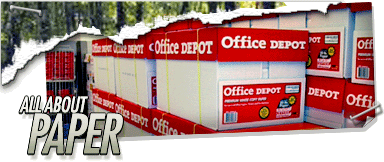
 |
 
Paper
 
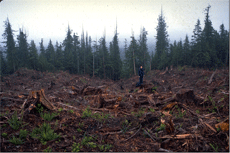
Most the the paper produced in the world comes from clearcuts like this one in British Columbia, Canada. Standing in the middle of this tragedy is Jeff Lockwood, Rainforest Relief Vice President and Northwest Chapter Director. The US is the largest per-capita consumer of pulp and paper products in the world. While the US is also a major producer, more and more of the pulp and paper products used in the US are imported. US paper consumption is expected to continue to grow: it doubled from 1955 to 1980 and is expected to double again by about 2010. 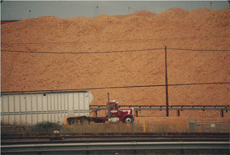
The next step in the process is turning trees into mountains of wood chips. In many places in the country, sparing rainforests from destruction for paper is easy, since there are recycling programs in place. Most states have some kind of program and many have curbside pick-up of everything from corrugated cardboard to juice boxes, so there's no excuse to not recycle. 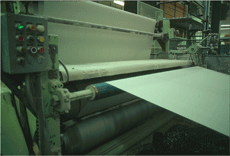
The paper machine, running out paper made from clearcut rainforests. But just as important is using less paper and using recycled paper whenever possible. Using less can also be easy. Easiest to avoid are disposable paper products such as paper cups, paper bags, paper napkins, and facial tissues. All of these have come about only in the last century and people did just fine with reusable items. 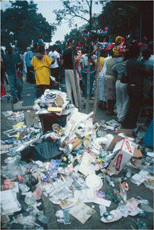
In the US we use more paper per-person than anywhere else in the world. Most of the paper we use is used once and discarded. You can spare rainforests from destruction by doing the following: Reduce Bring your own bags with you when you shop (we've found that reusing plastic bags is easiest, but cloth bags are readily available); bring your own reusable coffee mug with you to work or school; 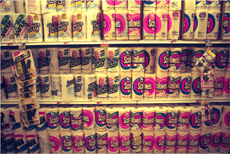
Except for a few brands, all of the paper towels produced for the US market are made from virgin paper from clearcut forests. it's easy to avoid paper towels: simply use sponges or rags to clear around the house or wipe up spills; use cloth napkins and hankerchiefs (they're also easier on your nose); bring your own containers when you go to a restaurant to avoid disposable take-out containers; rather than buying a newspaper every day, read your news on-line or arrange with co-workers to share a paper (and hey, in New York and other cities, finding a discarded paper is easy!). Reuse Set your printer or copier to double-sided (duplex) or load the printer with used-one-side paper which is fine for almost all of your print-outs. use once-used paper for notes, rather than buying pads. Recycle There are two sides to recycling: making sure things get to the recycler and also buying recycled. Recycled notebooks, pads, copy paper and bathroom & facial tissue are readily available. Check our Alternatives section to the right for more information. Buying paper made from paper means sparing trees, saving water and saving energy, as well as reducing pollution, since paper-making is one of the most polluting industries in the country. |
 |

|
||||||||||||||||||||||
 Copyright 2006 Rainforest Relief |
|||||||||||||||||||||||||
